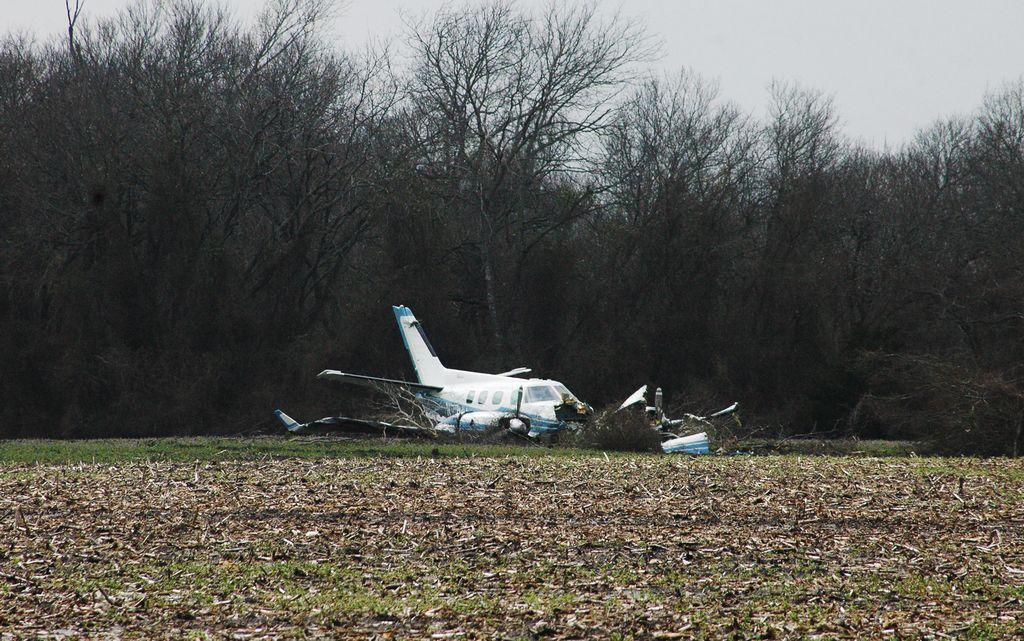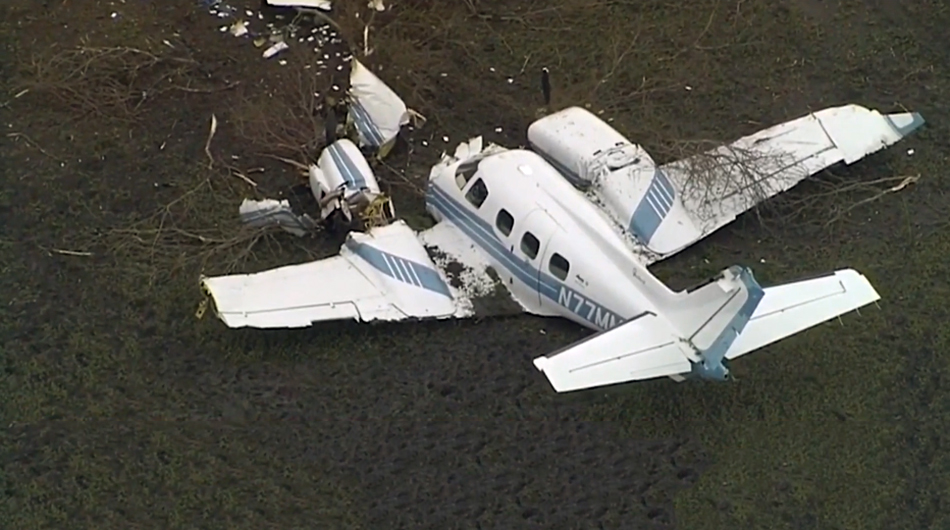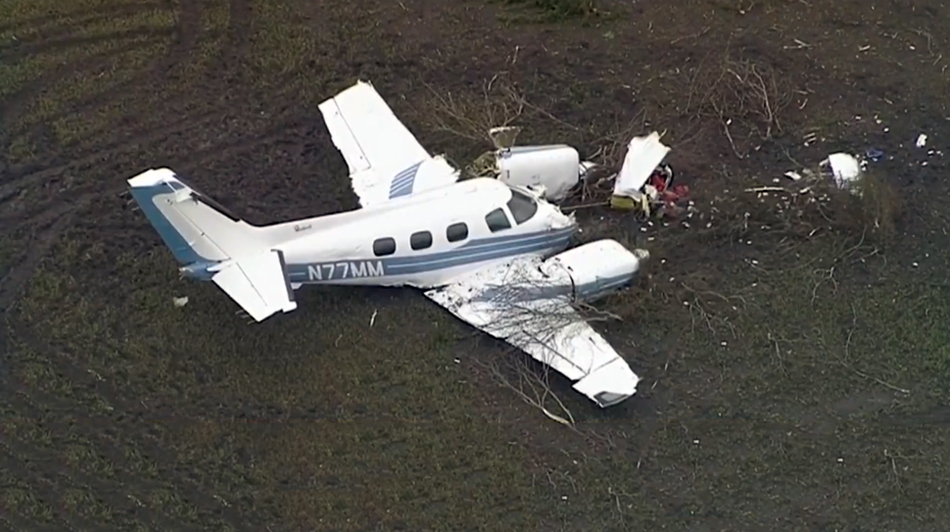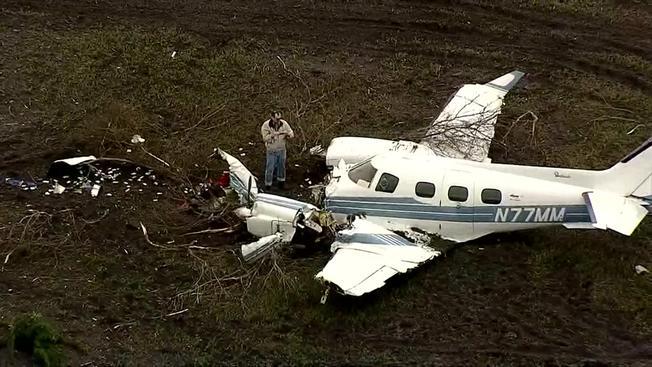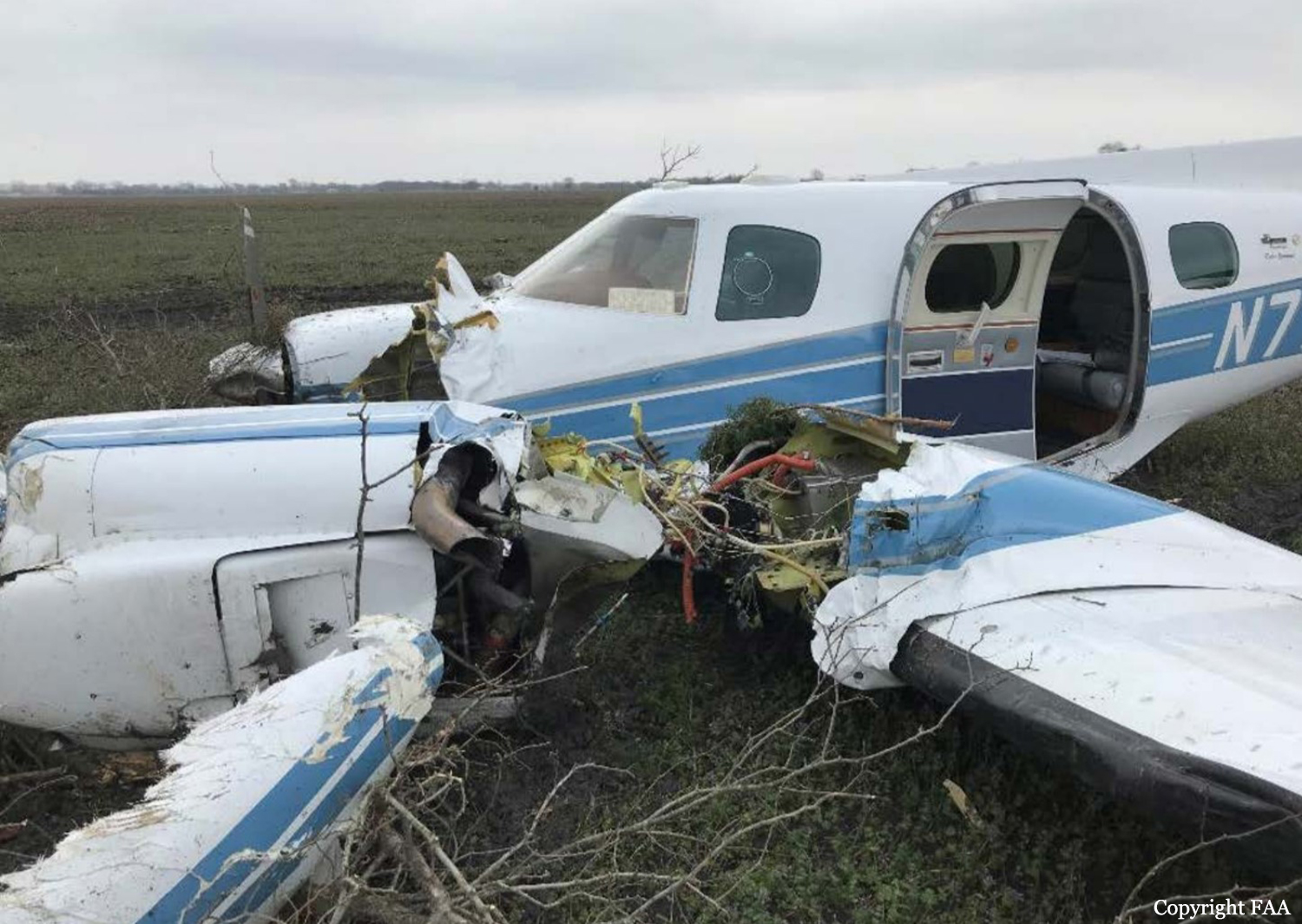Crash of a Beechcraft B60 Duke near Ferris
Date & Time:
Mar 1, 2018 at 1100 LT
Registration:
N77MM
Survivors:
Yes
Schedule:
Addison – Mexia
MSN:
P-587
YOM:
1982
Crew on board:
1
Crew fatalities:
Pax on board:
0
Pax fatalities:
Other fatalities:
Total fatalities:
0
Captain / Total hours on type:
2200.00
Aircraft flight hours:
2210
Circumstances:
The pilot in the multi-engine, retractable landing gear airplane reported that, during an instrument flight rules cross-country flight, about 5,000 ft above mean sea level, the left engine surged several times and he performed an emergency engine shutdown. Shortly afterward, the right engine lost power. During the emergency descent, the airplane struck treetops, and landed hard in a field with the landing gear retracted. The airplane sustained substantial damage to both wings, the engine mounts, and the lower fuselage. The pilot reported that he had requested 200 gallons of fuel from his home airport fixed base operator, but they did not fuel the airplane. The pilot did not check the fuel quantity during his preflight inspection. According to the Federal Aviation Administration Airplane Flying Handbook, Chapter 2, page 2-7, pilots must always positively confirm the fuel quantity by visually inspecting the fuel level in each tank. The pilot reported that there were no mechanical malfunctions or failures with the airplane that would have precluded normal operation.
Probable cause:
The pilot's improper preflight inspection of the fuel level, which resulted in a loss of engine power due to fuel exhaustion. Contributing to the accident was the pilot's failure to lower the landing gear before the emergency landing.
Final Report:
